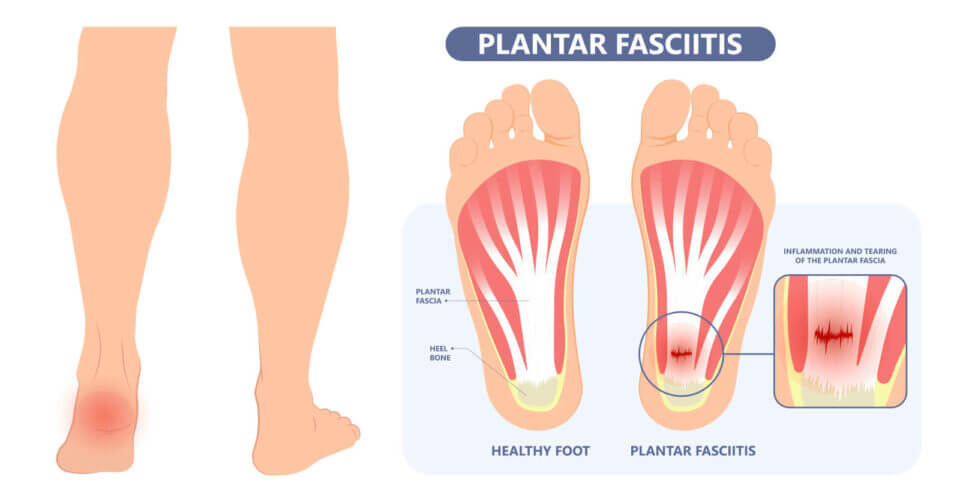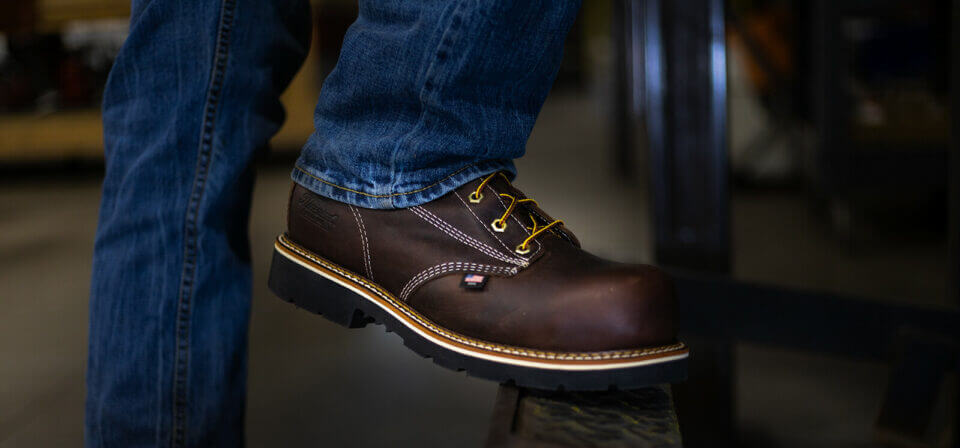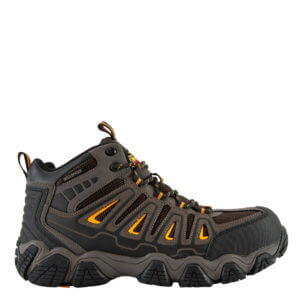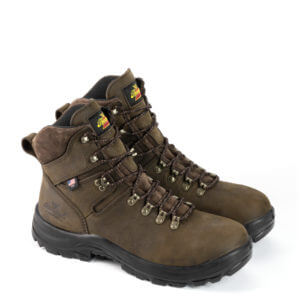When you’re on the search for great work boots you’re usually looking for two features: quality and comfort. Quality work boots are made from top grain leather, use robust stitching, and have a durable sole. Finding comfortable work boots differs for everyone since it depends on the type of job, time spent on your feet, boot sizing, and foot shape.
One thing is for sure – how your boots fit will play a key role in comfort. Boots that are too small can result in cramped toes, sore feet, and strained ligaments. On the other hand, work boots that are too big can give you blisters and sores, especially on joints.
Features to look for in work boots to alleviate sore feet include:
- Arch support – if you have high arches or flat feet, you may need insoles to reduce strain on your feet.
- Toe box size – regardless if you have steel or composite toe boots, you’ll need room so your toes don’t feel cramped.
- Heel height – Raised heels provide support and grip and change the weight distribution on your feet so be sure the height of your heel doesn’t put stress on your legs, hips, or back.
- Sole – A wedge sole more evenly disperses weight while a heeled sole can provide support and grip. Consider your daily tasks when choosing between soles.
- Material – Is the material used in your boot upper breathable and flexible to allow for a quick break-in period? If you’re looking for waterproof features or insulation, make sure your boots still allow your feet to breathe so they don’t keep in moisture.
- Laced vs. pull-on boots – Laced boots can be made tighter or looser, while pull-on boots have less adjustment ability. If you need laces to help your sore feet feel secure, make sure you’re fastening them properly.
Can Work Boots Cause Achilles Tendonitis?
Yes, poorly fitted work boots can cause issues Achilles Tendonitis, especially if they don’t provide adequate support. When you’re on your feet for long hours, an ill-fitted boot can cause unnatural movement which can stress the ankle and calf muscles and cause pain. A job-fitted and supportive work boot will be your best partner when you’re working on uneven surfaces and construction sites. Find out how work boots should fit to prevent issues like Achilles Tendonitis and other issues that cause sore feet.
Best Work Boots for Plantar Fasciitis

Plantar fasciitis is a common problem that feels like a stabbing pain in the bottom of your foot at the heel. The pain is caused by an inflamed band of tissue that goes across the bottom of your foot from your heel bone to your toes.
Commonly identified in runners, plantar fasciitis can affect anyone who spends lengthy amounts of time on their feet, or those without adequate foot support. Although the stabbing pain is usually the worst in your first steps of the day, it can also be triggered by long hours standing or working on your feet.
Choosing the best work boots for plantar fasciitis means learning more about your foot mechanics before purchasing a work boot. If you have flat feet, high arches, or are required to walk or stand in unnatural ways throughout the day, the way your weight is distributed can add stress to your foot condition. Here are some of our recommended boots for those suffering from sore feet:
- Infinity FD Series – These boots are made with anti-fatigue rebound soles that include added heel stability, a shock-absorption insert, and a high traction outsole. Combined with a waterproof yet breathable upper and maximum flex in the toe, these proprietary boots have quickly become fan favorites.
- American Heritage Moc Toe Series – This series combines a shock absorption footbed with a comfort cushion insole to help keep you on your feet all day, even in rugged conditions. They are our most popular series.
- Emperor Toe Series – Treat your feet with work boots designed to have wider and taller toe boxes. These boots are perfect for people who want extra space around the toes, but also for those with bunions. Having space and being able to wiggle your toes can improve discomfort, especially if you find that average work boots cramp your piggies unless you go up a size.

Best Work Boots for Flat Feet
For those with flat feet, consider choosing a work boot that combines protection with the sports-style of an athletic shoe for additional support. These boots are designed to handle rugged environments while also taking into account that you might be wearing them for long periods of time. Here are some of the boots we’d advise looking into:
- Crosstrex Series – When you need a durable work boot that can handle bad weather and still provide protection choose a waterproof hiker with a composite toe.
- American Union Series – These boots are waterproof with a rugged outsole and lugs that give you great traction on slippery surfaces while combining athleticism into a work boot appearance that looks great on the job site.
- American Union Series
Work Boot Accessories for Sore Feet
If the only way to relieve pain associated with flat feet is to include an insole, make sure to choose the right boot size to give your feet enough space to be comfortable with the added insert. You might need to size up to make sure your feet still have enough wiggle room and aren’t cramped. If you’re spending long days on your feet, an insole that provides shock-absorption or additional support can also be a great way to make work boots more comfortable for sore feet. Insoles for steel toe boots or any protective toe can make a toe box feel more cramped, however, so consider choosing a boot with a taller and wider toe box, like the Emperor series if your sore feet need the extra cushioning.
If you’re unsure what type of boot is best for your job type or foot condition, reach out to our customer service team for guidance.


